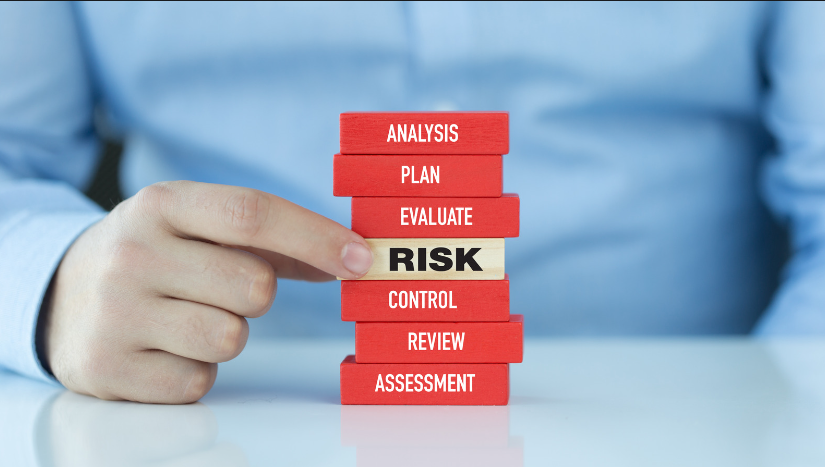In the increasingly interconnected digital world, organizations face constant threats from cyber incidents that can cripple their operations, expose sensitive data, and damage reputations. Incident response (IR) is a critical aspect of cybersecurity, but managing risks in incident response is equally crucial to ensure efficient recovery and minimize damage. One of the biggest challenges in IR is the human element, which often becomes a risk factor. This article explores effective strategies for managing risks in incident response by addressing human error, establishing robust procedures, and employing technical controls.
What is Incident Response?
Incident response refers to the structured approach an organization takes to manage the aftermath of a security breach or cyberattack. The primary goals of IR include limiting damage, reducing recovery time, and minimizing financial and reputational losses. However, the success of an incident response plan (IRP) heavily relies on how well organizations manage the associated risks.
The Importance of Managing Risks in Incident Response
Managing risks in IR involves identifying, assessing, and mitigating factors that could disrupt the efficient execution of response strategies. This process is vital because security incidents often escalate in severity when not managed properly. Understanding these risks and implementing strategies to address them can help organizations enhance their IR capabilities and reduce the likelihood of significant damages.
Types of Risks in Incident Response
Managing risks in incident response requires organizations to focus on various types of risks, including:
- Human Risk: Errors or negligence by individuals, lack of training, or insider threats.
- Technical Risks: System vulnerabilities, lack of patching, or improper configurations.
- Process Risks: Inadequate or outdated IR procedures.
- External Risks: Threats from third-party vendors or external attackers.
- Regulatory and Compliance Risks: Non-compliance with laws like GDPR or HIPAA can lead to severe penalties.
Understanding Human Risk in Incident Response
What is Human Risk in Incident Response?
Human risk in incident response refers to the vulnerabilities arising from employees, contractors, or other stakeholders who inadvertently or intentionally cause security breaches. According to Verizon’s 2023 Data Breach Investigations Report, 74% of security breaches were linked to human factors, highlighting the critical need to address these risks.
Common Human Risk Factors
- Negligence: Employees may fail to follow security protocols, such as leaving systems unlocked, writing down passwords, or neglecting updates.
- Lack of Awareness: Many employees are unaware of the potential dangers associated with phishing emails, malware, or social engineering attacks.
- Insider Threats: Employees or contractors with authorized access can misuse their privileges to steal data or harm the organization.
- Miscommunication: Failing to report incidents promptly or not communicating effectively can delay response times and worsen the damage.
Impact of Human Error on the Incident Response Lifecycle
Human error can affect the IR lifecycle in various ways:
| Stage | Human Risk Factor | Potential Impact |
| Detection | Failure to recognize suspicious activity or alerts | Delayed detection of threats |
| Analysis | Misinterpretation of data or security events | Inaccurate assessment of the incident’s scope |
| Containment | Incorrect isolation of affected systems | Escalation of the attack |
| Eradication | Failure to remove all traces of malicious activity | Recurrence of the incident |
| Recovery | Incorrect prioritization of recovery tasks | Prolonged downtime or data loss |
| Lessons Learned | Incomplete or incorrect documentation of the incident | Failure to improve future response capabilities |
Strategies to Manage Risks in Incident Response
1. Education and Training
A key component of managing human risks in incident response is educating employees on cybersecurity best practices. Training programs should focus on both proactive measures and proper response actions during an incident.
- Cybersecurity Awareness Programs: Regularly conduct awareness programs to educate employees on cyber threats, social engineering tactics, and how to recognize suspicious activities.
- IR Training: Ensure that all employees are familiar with the incident response plan and their roles in the event of a security breach. Training should include reporting procedures and basic response actions.
2. Establishing Clear Policies and Procedures
Having clear, documented policies and procedures ensures that employees know exactly what to do in the event of a cybersecurity incident.
- Documented IR Plan (IRP): Every organization should have a well-documented IRP that outlines roles, responsibilities, and specific actions to be taken during each phase of an incident. This reduces the risk of confusion during critical moments.
- Sensitive Information Handling: Develop clear protocols for handling sensitive data, such as encryption requirements, storage, and disposal methods. These guidelines can prevent unauthorized access or data loss.
3. Implementing Technical Controls
Effective technical controls help in minimizing human error and improving the overall security posture.
- Access Controls: Implement role-based access control (RBAC) to limit who can access sensitive systems or data. This minimizes the risk of insider threats and accidental data exposure.
- User Behavior Analytics (UBA): Utilize UBA tools to monitor user behavior and detect anomalies, such as unusual login times or data transfers. Early detection of insider threats or compromised accounts can significantly reduce the damage caused by an incident.
4. Incident Response Automation
Leveraging automation in incident response processes can help minimize human errors, accelerate response times, and ensure consistency.
- Automated Alerts: Set up automated alerts for suspicious activities, such as failed login attempts, unusual data transfers, or changes in system configurations.
- Runbooks and Playbooks: Automate routine IR tasks, such as isolating affected systems, through pre-defined runbooks and playbooks. This ensures a standardized response to common threats and reduces reliance on human intervention.
5. Building a Resilient Incident Response Team
A well-trained and resilient incident response team is essential for managing risks effectively. This team should include cybersecurity experts, legal advisors, and communication specialists to handle different aspects of a security incident.
- Incident Response Roles: Assign clear roles within the team, such as a team leader, incident handlers, and forensic analysts. Ensure that each team member is trained in their specific area.
- Regular Drills and Simulations: Conduct regular tabletop exercises and simulations to practice IR under various scenarios. This helps the team stay sharp and prepared for real-world incidents.
6. Continuous Improvement through Post-Incident Reviews
After every incident, it’s essential to conduct a post-incident review to identify what went well and what needs improvement. This is an opportunity to address any gaps in the IRP and make necessary updates.
- Root Cause Analysis: Perform a root cause analysis to determine the underlying factors that led to the incident. This can help in preventing similar incidents in the future.
- Lessons Learned: Document lessons learned and update the incident response plan based on new insights. Share these learnings with the entire organization to foster a culture of continuous improvement.
FAQs
1. What is human risk in incident response?
Human risk in incident response refers to the vulnerability of individuals to cause security breaches, either accidentally or intentionally, through errors, lack of awareness, or insider threats.
2. Why is managing human risk important in cybersecurity?
Managing human risk is essential because humans are often the weakest link in cybersecurity. Addressing human factors, such as errors and negligence, can prevent significant breaches and minimize damage during incidents.
3. How can training help manage IR risks?
Training employees on cybersecurity best practices and IR procedures ensures they understand their role in preventing and mitigating incidents. This reduces the likelihood of human error and enhances the organization’s overall security posture.
4. What role do technical controls play in incident response?
Technical controls, such as access management and user behavior analytics, help reduce human error by limiting access to sensitive systems and detecting unusual behavior. These controls add an additional layer of security to incident response processes.
5. How can automation improve incident response?
Automation can accelerate response times, reduce human errors, and ensure consistency in handling security incidents. Automating routine tasks, such as isolating affected systems, allows organizations to respond more efficiently and effectively to threats.
Click here, to know more about how to make cybersecurity education and awareness more effective.









